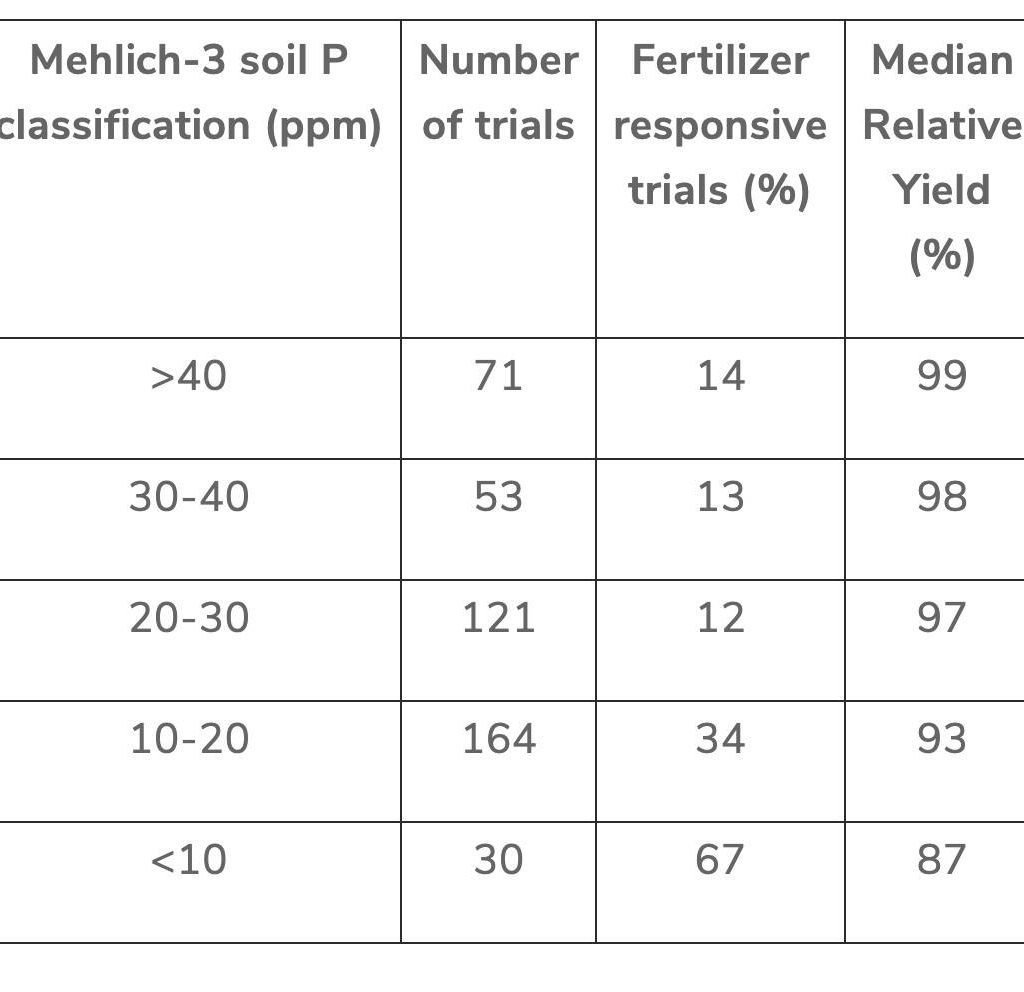Applying extra phosphorus to drive crop yields can work — unless the field in question already contains the nutrient at 20 parts per million or higher.
Why it matters: Phosphorus is a critical nutrient for crop growth.
Beyond that, research from Ohio State University indicates yield gains from additional phosphorus are likely minimal at best.
Soil fertility specialist Manbir Rakkar and field specialist Greg LaBarge analyzed the correlation between available phosphorus and crop yield from 457 different field trials conducted across Ohio.
They divided phosphorus levels into five categories: less than 10 ppm, 10 to 20 ppm, 20 to 30 ppm, 30 to 40 ppm, and greater than 40 ppm. The yield response for corn, soybeans and wheat was compared to when additional phosphorus was applied in soils within the five categories.
Relative yield — where no additional phosphorus was applied — was used as a baseline.
Resources from Ohio State University report the following:
- Generally, as the soil test P levels decreased, the yield increment increased with P input (see Table 1).
- When the soil test P was less than 10 ppm, the median relative yield was 87 per cent. As the soil test P level increased above the critical level of 20 ppm, the median relative yield ranged from 97 to 99, signifying minimal yield increment with added P.
- When the soil P level was less than 10 ppm, 67 per cent of trials showed increased crop yields with applied P. When the P levels were above the critical level of 20 ppm, only 12 to 14 per cent of trials showed increased crop yields.
In other words, the likelihood of yield penalty with no P application decreases as soil P levels go above 20 ppm. If the soil test P level is less than 20 ppm, there is an increased risk of yield penalty with no P application.

Last published in 2024, the observations of Rakkar and LaBarge’s statistical analysis remain relevant amidst high input prices in 2025. Speaking recently to Farmtario, Rakkar says their findings are gaining significantly more interest among growers.
“Maybe five years ago nobody really paid attention. Now whenever I present [to growers] it clicks … Tight profit margins are making farmers go a little deeper into their excel sheets and profit calculations,” she says, adding the analysis further supports the recommendation to pursue a soil phosphorus “maintenance range” between 20 and 40 ppm.
If a soil test indicates phosphorus at 30 ppm, for example, Ohio State recommendations suggest growers should only apply to maintain or build levels.
But when the economics of doing so don’t make sense, Rakkar says the recommendation can change to draw from previous good practices and “totally skip application this round.”
“What our data is showing in Ohio, the drop rate is generally one ppm per year. One to four ppm range, really. So, if you don’t apply phosphorus for one or two years, that’s totally fine,” says Rakkar. Growers with soil tests showing phosphorus levels at 15 ppm, however, should still be spending on additional nutrient because “there’s a high probability” of negative yield impact.
The post Little yield impact from excess phosphorus: study appeared first on Farmtario.














